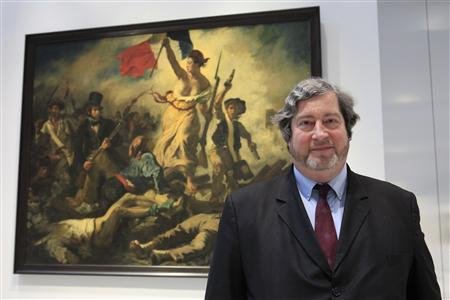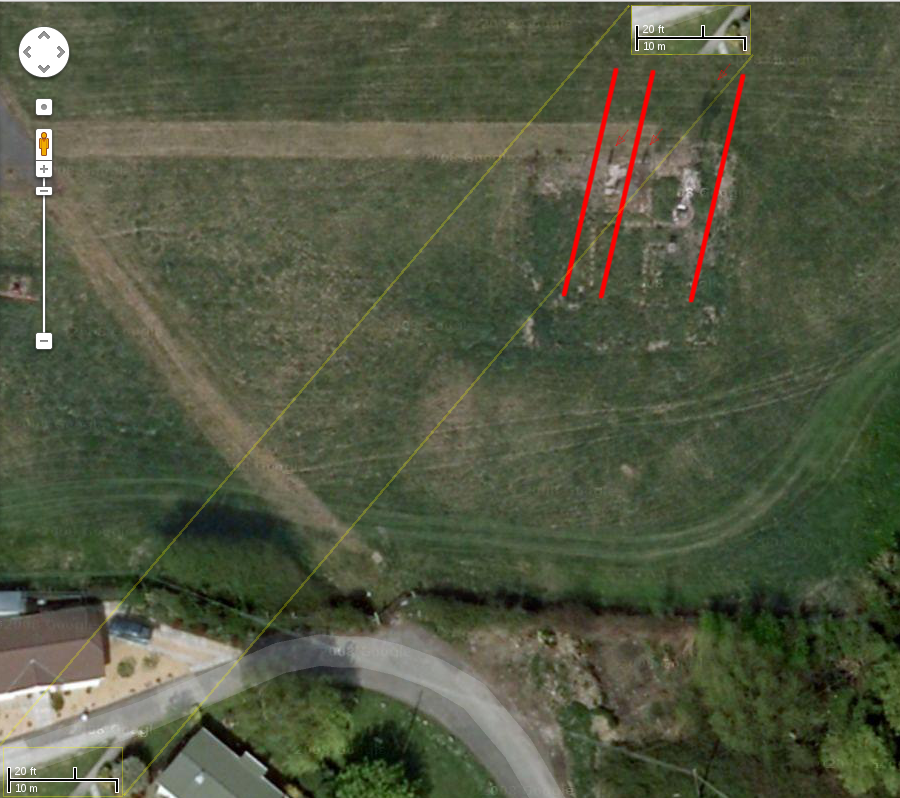Podcast: Play in new window | Download (Duration: 8:45 — 8.0MB)
Aboneaza-te! Apple Podcasts | Spotify | iHeartRadio | Stitcher | Blubrry | Email | TuneIn | RSS
Skeptical Reporter for April 5th, 2013
TED, the nonprofit organization devoted to Ideas Worth Spreading, has revoked its prestigious TEDx licensing for an upcoming West Hollywood event. The goals of the TEDx event, titled Brother can you spare a paradigm?, were to "illuminate the urgent need to change our fundamental value system or worldview to one in which humanity pulls together rather than separately," the official website for the event states. The conversation the TED representative had with the organizers reveals the reason behind the decision: “When we look at your speaker line-up, we see several people who promote — as fact — theories that are well outside what most scientists would accept as credible. The problem is not the challenging of orthodox views. We believe in that. We've had numerous talks which do that. But we have rules about the presentation of science on the TEDx stage. We disallow speakers who use the language of science to claim they have proven the truth of ideas that are speculative and which have failed to gain significant scientific acceptance”.
The Church of Scientology is planning a publicity drive in Australia to challenge what it calls “misconceptions” among the public and the media. The controversial religious group kicked off a PR drive with an appearance on Seven breakfast show Sunrise. The Sunrise interview followed the publication of a guide for journalists that outlined the areas where the organisation feels it has been wrongly represented in the past. The Church of Scientology plans to launch a localised version of a US-made TV ad that ran around the Super Bowl, use direct marketing activity to promote its videos and books, and encourage people to visit its churches to learn about Scientology for themselves. The TV ad bears similarities to Apple’s ‘Think different’ classic from 1997. Scientology has used PR agency Wells Haslem since 2009, the year that Scientology was branded a “criminal organisation” by South Australian senator Nick Xenophon.
Measles is responsible for thousands of tragic (and preventable) deaths each year. Which is perhaps why there has been enormous backlash against a new (and apparently self-published) book by Stephanie Messenger, an Australian author and anti-vaccine activist. According to the author’s page, “Melanie’s Marvelous Measles” was written to: educate children on the benefits of having measles and how you can heal from them naturally and successfully. The description says: “Often today, we are being bombarded with messages from vested interests to fear all diseases in order for someone to sell some potion or vaccine, when, in fact, history shows that in industrialized countries, these diseases are quite benign and, according to natural health sources, beneficial to the body”. Amazon reviewers have not taken kindly to Messenger’s suggestion that measles can be an “adventure,” either. Australian Medical Association president Dr Steve Hambleton said the disease was still dangerous, potentially fatal, and that anyone promoting it should be ashamed of themselves. He said children with measles were very ill and at risk of death or brain damage. In Australia, the book has been removed from sale, by the largest online bookstore.
Australian neuroscientists have attacked a taxpayer-funded brain-training and exercise program used in classrooms for making ''silly'' pseudo-scientific claims when explaining how it works. The Brain Gym program, created in the 1970s by an American educator and taught in more than 80 countries, is being used by teachers in all states in an attempt to improve students' learning. Practitioners usually charge $660 for the basic Brain Gym 101 course, aimed at teachers and students. But the program has generated controversy overseas, with the British Neuroscience Association in 2008 slamming the product for promoting neuromyths. Teachers can train with more than 60 Brain Gym practitioners in Australia outside school hours and use its activities in the classroom. The Teachers Federation confirmed NSW teachers can be reimbursed through their schools' professional development funds, provided by state governments. The Brain Gym website says its 26 physical exercises will "bring about rapid and often dramatic improvements in concentration, memory, organising and more" by developing "neural pathways" in participants' brains.
And now let’s look at some news in science.
Five years ago, an IBM-built supercomputer designed to model the decay of the US nuclear weapons arsenal was clocked at speeds no computer in the history of Earth had ever reached. At more than one quadrillion floating point operations per second (that's a million billion, or a "petaflop"), the aptly named Roadrunner was so far ahead of the competition that it earned the #1 slot on the Top 500 supercomputer list in 2008 and one last time in 2009. Today, that computer has been declared obsolete and it's being taken offline. Based at the US Department of Energy's Los Alamos National Laboratory in New Mexico, Roadrunner will be studied for a while and then ultimately dismantled. While the computer is still one of the 22 fastest in the world, it isn't energy-efficient enough to make the power bill worth it. Costing more than $120 million, Roadrunner's 296 server racks covering more than 500 square metres contained 122,400 processor cores. Super-computing researchers are now looking toward exascale speeds—1,000 times faster than a petaflop—but major advances in energy efficiency and price-performance are necessary.
Scientists have found a way to "read" dreams, a study suggests. Researchers in Japan used MRI scans to reveal the images that people were seeing as they entered into an early stage of sleep. Writing in the journal Science, they reported that they could do this with 60% accuracy. The team now wants to see if brain activity can be used to decipher other aspects of dreaming, such as the emotions experienced during sleep. Professor Yukiyasu Kamitani, from the ATR Computational Neuroscience Laboratories, in Kyoto, said: "I had a strong belief that dream decoding should be possible at least for particular aspects of dreaming... I was not very surprised by the results, but excited”. The researchers now want to look at deeper sleep, where the most vivid dreams are thought to occur, as well as see whether brain scans can help them to reveal the emotions, smells, colours and actions that people experience as they sleep.
A 2 billion dollar experiment on the Space Station has made observations that could prove to be the first signs of dark matter, a mysterious component of the Universe. The Alpha Magnetic Spectrometer surveys the sky for high-energy particles, or cosmic rays. It has seen evidence for what could be dark matter colliding with itself in a process known as "annihilation". But scientists stress that a precise description of this enigmatic cosmic constituent is still some way off. "It could take a few more years," said AMS deputy spokesman Roberto Battiston, a professor of physics at Trento University, Italy. "But the accuracy that AMS is displaying is far greater than past experiments, so we're getting closer to unveiling the cause of the particle events we're detecting," he explained. Dark matter accounts for most of the mass in the Universe.
Scientists showed they could erase a rat's cocaine habit by shining a laser light on its brain. The achievement could give rise to a new therapy for people crippled by an addiction to the drug, researchers say. For people and lab rats alike, a compulsive cocaine addiction can dull activity in the prefrontal cortex, a brain region thought to be important for impulse control and decision making. In the new study, scientists used genetic engineering to transform neurons in the rats' prefrontal cortex into a switch. They implanted light-sensitive proteins called rhodopsins in the neurons that they could turn on and off with a laser light. "When we turn on a laser light in the prelimbic region of the prefrontal cortex, the compulsive cocaine seeking is gone," said study researcher Antonello Bonci, scientific director of the intramural research program at the National Institute on Drug Abuse.
And, now, in local news from Romania, we learn that
In a famous Romanian murder case, know as ”Elodia”, the body of the victim was searched for using a device known to be a scam. The ADE 650 device, was said to be able to locate a dead body using just a few strands of hair, if it was handled by a capable person. But the inventor of ADE 650, James McCormick, has already been arrested by British authorities after the device was sold in Iraq and Afghanistan to detect bombs, but was proved inefficient.
Links:
- http://www.digitaljournal.com/article/346918
- http://mumbrella.com.au/scientology-137346?religionnewsblog.com
- http://www.salon.com/2013/01/07/anti_vaccine_book_tells_kids_to_embrace_measles/
- http://www.news.com.au/lifestyle/health-fitness/controversial-anti-vaccination-book-removed-from-sale/story-fneuzlbd-1226551911539
- http://www.smh.com.au/nsw/brain-gym-claims-challenged-20130112-2cmes.html#ixzz2Hw4ZtQ6h
- http://www.bbc.co.uk/news/science-environment-22031074
- http://www.bbc.co.uk/news/science-environment-22016504
- http://www.livescience.com/28409-zap-a-cocaine-addiction-with-lasers.html
- http://arstechnica.com/information-technology/2013/03/worlds-fastest-supercomputer-from-09-is-now-obsolete-will-be-dismantled/
- http://www.realitatea.net/dispozitivul-misterios-folosit-in-cazul-cioaca-demasca-o-frauda-de-propor-ii_1154250.html


